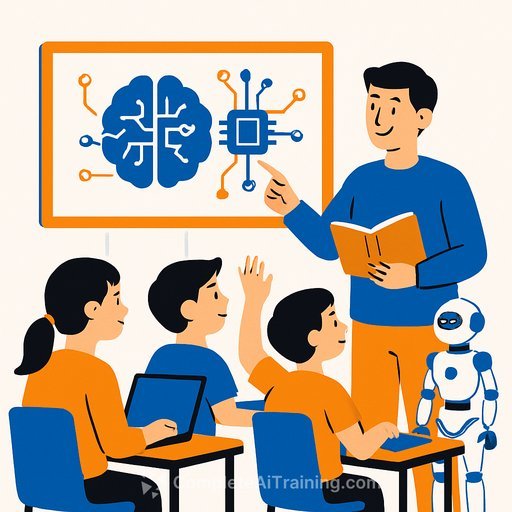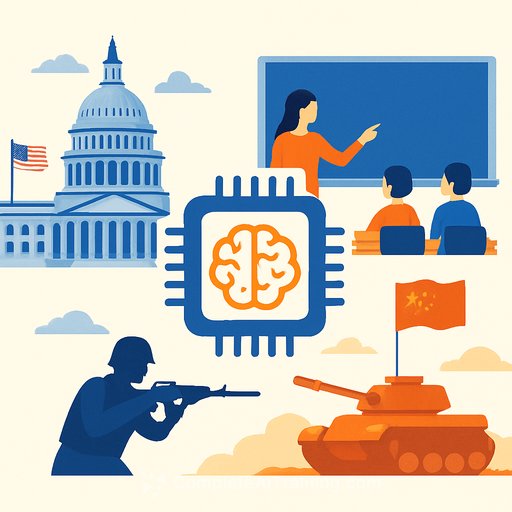AI Is Breaking the Assignment Economy of Higher Education
Two years after consumer AI hit the classroom, the traditional assignment model is buckling. Essays, take-home problem sets, and asynchronous discussion posts can be outsourced in minutes. Detection tools are unreliable and raise privacy concerns. The more we police, the more students optimize around the system rather than learn.
If your assessment depends on static text and quiet compliance, AI will beat it. If your teaching depends on live reasoning, personal voice, and social accountability, AI becomes a calculator, not a crutch.
What the Ultra-Orthodox Yeshiva Model Gets Right
This tradition thrives on direct demonstration of thinking, not just produced artifacts. It favors dialogue, memory, constant review, and public defense over solitary submission. You can adapt these moves without adopting the theology.
- Chavruta (paired study): Students debate texts together, pressing each other on logic and sources.
- Oral checks and public defense: Knowledge is shown in real time, with questions, follow-ups, and counter-examples.
- Process over product: Notes, drafts, and repetitions matter as much as the final take.
- Apprenticeship (shimush): Students learn by observing a skilled teacher reason through problems out loud.
- Community norms: Honor is tied to integrity and contribution, not just grades.
Translate This Into Secular Classrooms
- Replace one term paper with a viva: 10-12 minutes per student, recorded. Ask them to defend their thesis, cite sources from memory, and adapt under cross-examination.
- Run weekly chavruta blocks: Pairs argue a prompt, submit a one-page argument map signed by both, and rotate partners every two weeks.
- Switch to whiteboard/problem defenses: Give unseen variants in class; students talk through reasoning before writing.
- Require a process portfolio: Time-stamped notes, drafts, and a brief reflection on what changed and why. Grade the process.
- Hold "siyum" demos: Short public presentations at unit's end showing what was learned and how it connects.
- Use proctored, handwritten "concept sheets": One page allowed in open-response exams to test recall and transfer, not regurgitation.
A Practical AI Policy You Can Publish Tomorrow
- Allowed: Brainstorming, outline ideas, code comments, grammar passes. Students must disclose tools used and paste prompts/outputs in an appendix.
- Restricted: Generating full answers, literature reviews, or data analysis without clear attribution and personal verification.
- Prohibited: Undisclosed ghostwriting. Assign a zero and require a redo as a live defense.
- Assessment mix: At least 40% of the grade from live performance (orals, in-class problem solving, whiteboard sessions).
Keep Faculty Load Manageable
- Orals in trios: one student defends, one challenges, one observes; rotate roles. Grade with a three-line rubric.
- Use 5-minute "micro-vivas" at the start of class for random students; cover the cohort across the term.
- Batch recordings and sample 20% for calibration. Invite TAs or advanced students to help with observing.
- Swap one take-home essay for a studio day; the time evens out.
Mitigate Risks
- Equity in orals: Share question banks and criteria in advance; allow brief prep time; offer alternative formats for accessibility.
- Bias: Co-grade a subset, record sessions, and keep short evidence notes to audit fairness.
- Scalability: Group defenses, peer challenges, and rotating panels keep it feasible in large courses.
- Privacy: Inform students about recording purpose and retention; secure storage; delete on schedule.
What "Working" Looks Like in 90 Days
- Fewer suspicious submissions because the grade depends on live reasoning.
- Better recall and transfer under pressure.
- More engaged discussion; fewer passive note-takers.
- Shorter grading cycles due to simpler, performance-based rubrics.
Useful References
If You're Training Your Faculty
If you need structured resources on practical AI use, policy templates, and classroom workflows, explore these educator-friendly collections:
Stop fighting AI with cat-and-mouse surveillance. Build courses where the only way to succeed is to think out loud, defend your ideas, and contribute to a community of inquiry. That's hard to fake-and that's the point.
Your membership also unlocks:






